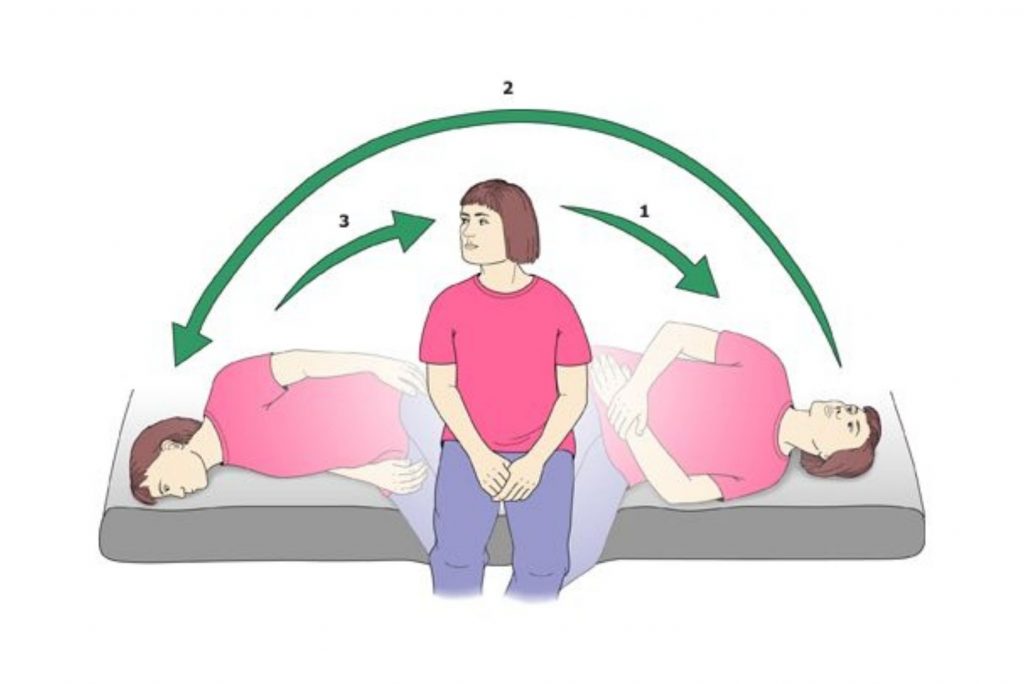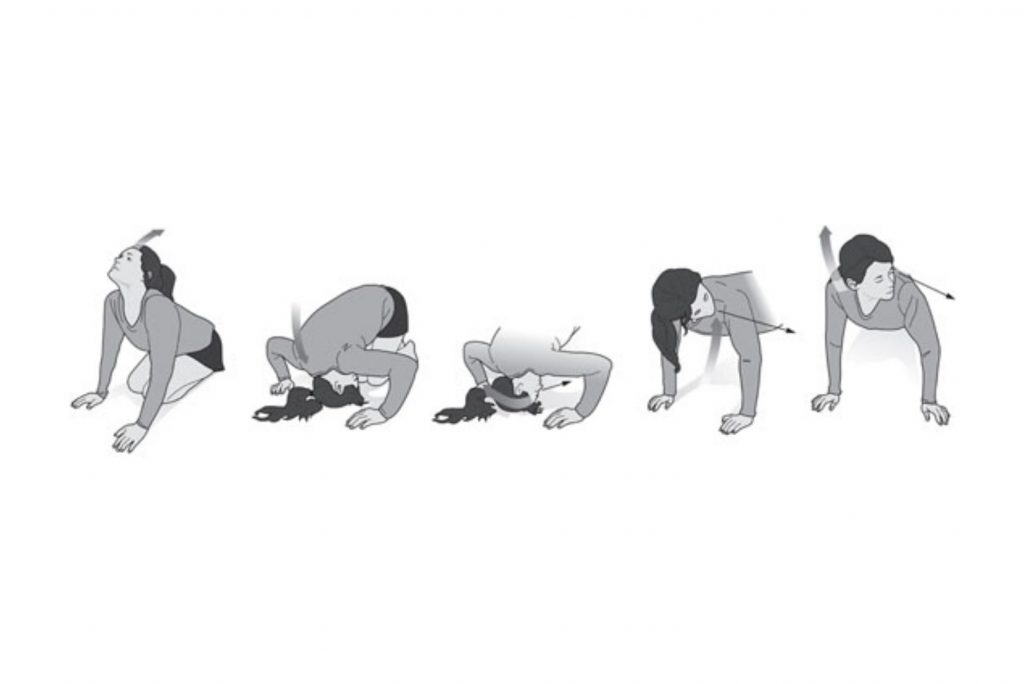Exercise For Vertigo: Easy Tips For Quick Relief
9,431 viewsBecause vertigo mostly causes problems with balance, the key to quick relief from vertigo is practicing exercises that improve your balance. The best exercise for vertigo is one that helps your brain and body deal with the confusing signs of vertigo.
However, keep in mind that vertigo exercises can make you feel a bit worse at the beginning. So it’s crucial, to begin with, to slow movements initially. Once your body has gotten used to these repetitive movements, you can steadily increase your pace of exercise.
Many people also wonder whether exercise is good for vertigo. If you feel that exercising makes your symptoms worse, please talk to your doctor about the right way to go about vertigo exercises.
Brandt-Daroff Exercise for Vertigo
Brandt-Daroff exercise for vertigo is a series of movements that can help relieve the symptoms of BPPV (Benign Paroxysmal Positional Vertigo). In some cases, it can also help people with labyrinthitis vertigo feel better.
How to do Brandt-Daroff exercise for Vertigo
 Here are the steps involved in doing the Brandt-Daroff exercise for vertigo:
Here are the steps involved in doing the Brandt-Daroff exercise for vertigo:
- Get into the sitting position, preferably at the edge of a couch or a bed.
- Now quickly lie down on your right side, with your nose pointing upwards. It’s best to do this in a way that your head looks up at a 45-degree angle.
- Maintain the posture for 30 seconds.
- Now get back in the sitting position and hold the posture for 30 seconds.
- Next, lie down on your left side the same way you did in step 2. Hold for 30 seconds.
- Get back to the sitting position and hold for 30 seconds.
- Repeat the set four more times, making the exercise a total of five sets.
After you have finished five sets, you might feel a little dizzy. It’s normal to experience this after the Brandt-Daroff exercise. Wait for a few minutes until the dizziness passes. Then, you can stand up and go about your day.
How frequently should you do the Brandt-Daroff exercise?
Patients are generally advised to do five sets of Brandt-Daroff exercise at least twice every day. However, talk to your doctor about the right frequency for you, based on your vertigo symptoms and severity.
What to expect after the Brandt-Daroff exercise?
It varies from person to person. Some people may feel that their vertigo has suddenly vanished right after the exercise. Others may have to continue doing the exercise for a couple of weeks to have a gradual relief from vertigo symptoms.
Epley Maneuver Exercise For Vertigo
Like the Brandt-Daroff exercise, the Epley maneuver is used to relieve the symptoms of BPPV. It involves movements that help reposition the crystals in your inner ear.
Because of the kind of movements involved in the Epley maneuver, it’s best to ask a doctor to help you perform this exercise. After you have done a couple of sessions with a doctor, you can begin to do Epley maneuver at home.
How to do Epley maneuver exercise for Vertigo

Important: To keep the instructions as simple as possible, we have listed the steps with the objective of treating vertigo in the left ear. If your symptoms are originating from the right ear, please perform these steps on your right side.
- Start in a sitting position, with your back upright and legs flat on the bed.
- Turn your head to the left and quickly lie down such that your shoulder is on the pillow and your head is in the reclining position. Hold this position for 30 seconds.
- Now turn your head towards the right, without raising it from the bed. Hold this position for 30 seconds.
- Next, turn your body towards the right and your head further to the right. As you can see below, your head should be at a 45-degree angle from the body. Hold the position for 30 seconds.
- You can finally get up and get in a sitting position on the same side that your body is facing.
How frequently should you do the Epley maneuver exercise?
Patients are commonly advised to do the Epley maneuver exercise twice before going to bed every night. You should keep doing it until the time you spend 24 hours without experiencing the symptoms of vertigo.
However, your doctor can advise you on the ideal frequency of doing this exercise based on your condition and medical history.
What to expect after the Epley maneuver exercise?
Many patients get a long-term result from just a couple of sessions of Epley maneuver exercise for vertigo. In other cases, patients may need to continue doing the exercise for a couple of weeks before they can see significant results.
Semont Maneuver Exercise For Vertigo
Semonth maneuver is yet another exercise for vertigo that helps to deal with the symptoms of BVVP. The movements involved in this exercise are a bit complicated so it’s best to do this under the supervision of your doctor for the first few times.
How to do Semont maneuver exercise for Vertigo

Important: To keep the instructions as simple as possible, we have listed the steps with the objective of treating vertigo in the left ear. If your symptoms are originating from the right side, please perform these steps on your right side.
- Sit upright on the edge of your bed with your legs hanging down. Turn your head to the right.
- Quickly lie on the bed on your left side. Your head should still be in the same position as in step 1. Hold this position for 30 seconds.
- Now quickly get up and lie down on your right side, while maintaining the position of your head. You should now be facing the floor. Hold this position for 30 seconds.
- Slowly, return to your original position and relax.
After you have finished this exercise, keep sitting for at least 10 minutes before you get up and move.
How frequently you should do the Semont maneuver exercise?
Patients are commonly advised to do the Semont maneuver exercise once a day. You should keep doing it until the time you spend 24 hours without experiencing the symptoms of vertigo.
However, your doctor can advise you on the ideal frequency of doing this exercise based on your condition and medical history.
What to expect after the Semont maneuver exercise?
Many patients get a long-term result from just a couple of sessions of Semont maneuver exercise for vertigo. In other cases, patients may need to continue doing the exercise for a couple of weeks before they can see significant results.
Foster Maneuver Exercise For Vertigo
Also called Half-Summersault, the Foster maneuver is an easy exercise for vertigo. Out of all the exercises mentioned in this blog, this one is the only exercise that you can confidently do without professional supervision.
How to do Foster maneuver exercise for Vertigo

Important: To keep the instructions as simple as possible, we have listed the steps with the objective of treating vertigo in the left ear. If your symptoms are originating from the right side, please perform these steps on your right side.
- Kneel down and lift your head up to face the ceiling for 5-10 seconds.
- Bend forward and touch the floor with your forehead such that your chin goes towards your knees.
- Turn your head 45 degrees to the left such that it faces your left elbow. Hold his position for 30 seconds.
- Now raise your head quickly such that it stays at the same level as your shoulders. Remember that your head should still be turned towards the left.
- Holding your head in the same position, sit upright for a few seconds before you move back to your original position.
How frequently you should do the Foster maneuver exercise?
Because the Foster maneuver doesn’t involve intense movements, you may require to repeat the exercise at least three times a day. Make sure you take a 15-minute break between these Foster maneuver sessions.
However, it’s best to consult your doctor regarding how often you should do this exercise for vertigo.
A Word of Caution
Doing exercise for vertigo can get you the best results only if after you have got your problem diagnosed appropriately. Vertigo can sometimes be a very complicated issue that stems from other underlying diseases. So if you have just begun to see the first signs of vertigo, it’s best to see an ENT specialist who can diagnose the root cause of your vertigo.
Regency Medical Center is an established name when it comes to vertigo diagnosis and treatment in Tanzania. Equipped with state-of-the-art infrastructure and instruments, our experienced ENT doctors specialize in diagnosing the exact cause of vertigo and suggesting the best vertigo treatment plan.
For expert advice on vertigo treatment or for consulting the best physiotherapist for vertigo in Tanzania, book an appointment here.


